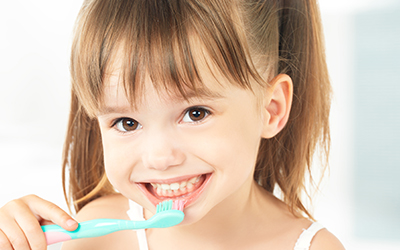Posted on Dec 9, 2024
File ID 43155935 | © Evgenyatamanenko | Dreamstime.com

Ever stood in the dental aisle of a store, surrounded by a colorful array of toothbrushes, feeling slightly overwhelmed about which one to pick for your little one? You're not alone. Selecting the perfect toothbrush for your child is crucial—not only for their oral health but to make brushing a fun habit from the very start. Here's your guide to pediatric dental care and finding that perfect brush.
Start with the Size: The size of the toothbrush is your first checkpoint. A brush that's too big won't clean properly and could be uncomfortable, while one that's too small won’t do the job efficiently. Therefore, try to look for a toothbrush that fits snugly into the child’s mouth and can reach all their teeth easily, even the back molars. For most kids, a small, soft-bristled brush is ideal. Soft bristles are gentle on young gums and are still quite effective at removing plaque without causing any damage.
Consider the Handle: Young kids need a toothbrush with a handle they can grip easily. Many children’s toothbrushes have chunky, rubber-coated, or contoured handles that are designed for small hands to hold. This can make all the difference in how well they brush, especially as they learn.
Bristles Matter: When it comes to bristles, soft is the way to go for kids. Hard bristles can be harsh on young gums and could discourage them from brushing due to discomfort. Also, some brushes come with multi-height bristles or angled designs to help clean different areas of the mouth more effectively—these features can be particularly useful as your child’s mouth grows and changes.
Make It Fun: Let’s face it—brushing can seem like a chore. Choose a brush that’s visually appealing or features a favorite cartoon character. Electric can also be a fun option; they often feature characters, lights, and music, which can make brushing time something they actually look forward to. Plus, many come with built-in timers to help ensure they brush for the full recommended two minutes.
When to Change the Brush: Replace your child's toothbrush every three to four months or sooner if the bristles are frayed or visibly worn out. A fresh toothbrush is effective at cleaning, and consistently keeping up with replacements is a good practice to maintain optimal oral health and hygiene.
In conclusion, choosing the right toothbrush for your child doesn't have to be daunting. By focusing on the size, handle, bristle type, and fun factor, you can ensure your child's pediatric dentistry needs are met with a toothbrush they love. Looking for more guidance on dental care for your little ones? Visit Firestone Pediatric Dentistry & Orthodontics today, where we specialize in dental pediatrics.
So, why wait? Schedule an appointment today, and let us help keep those tiny teeth shining bright.